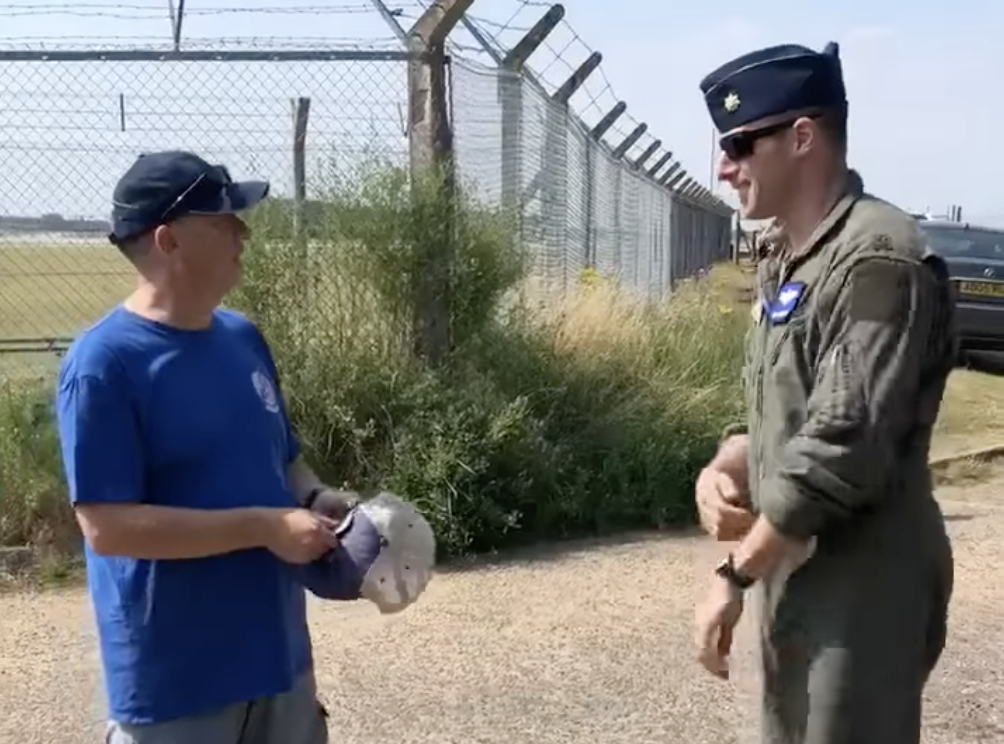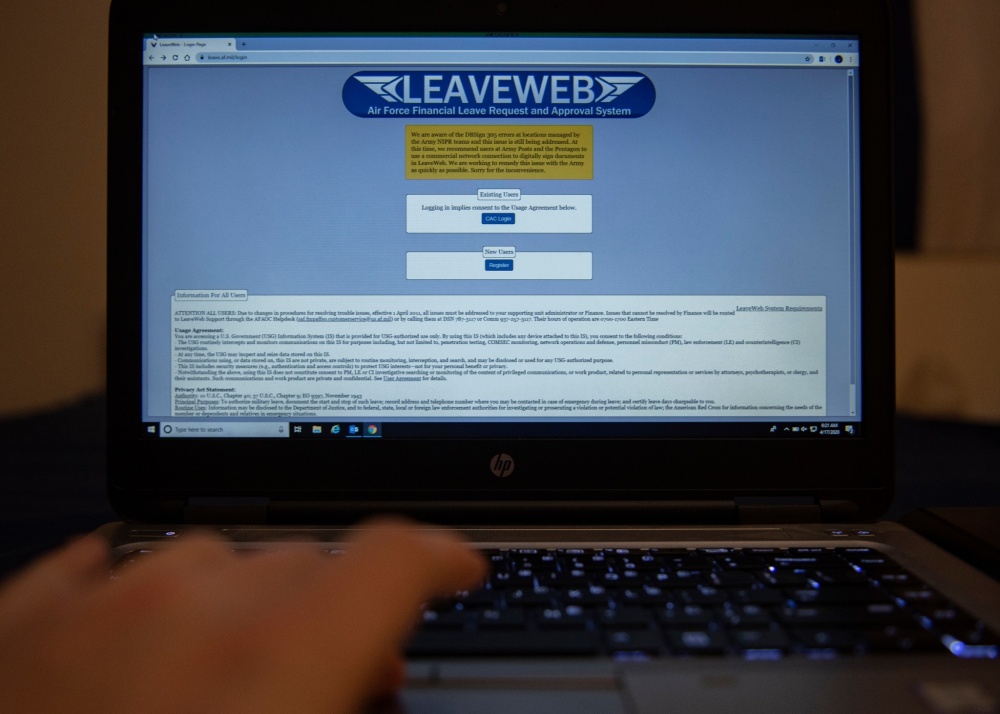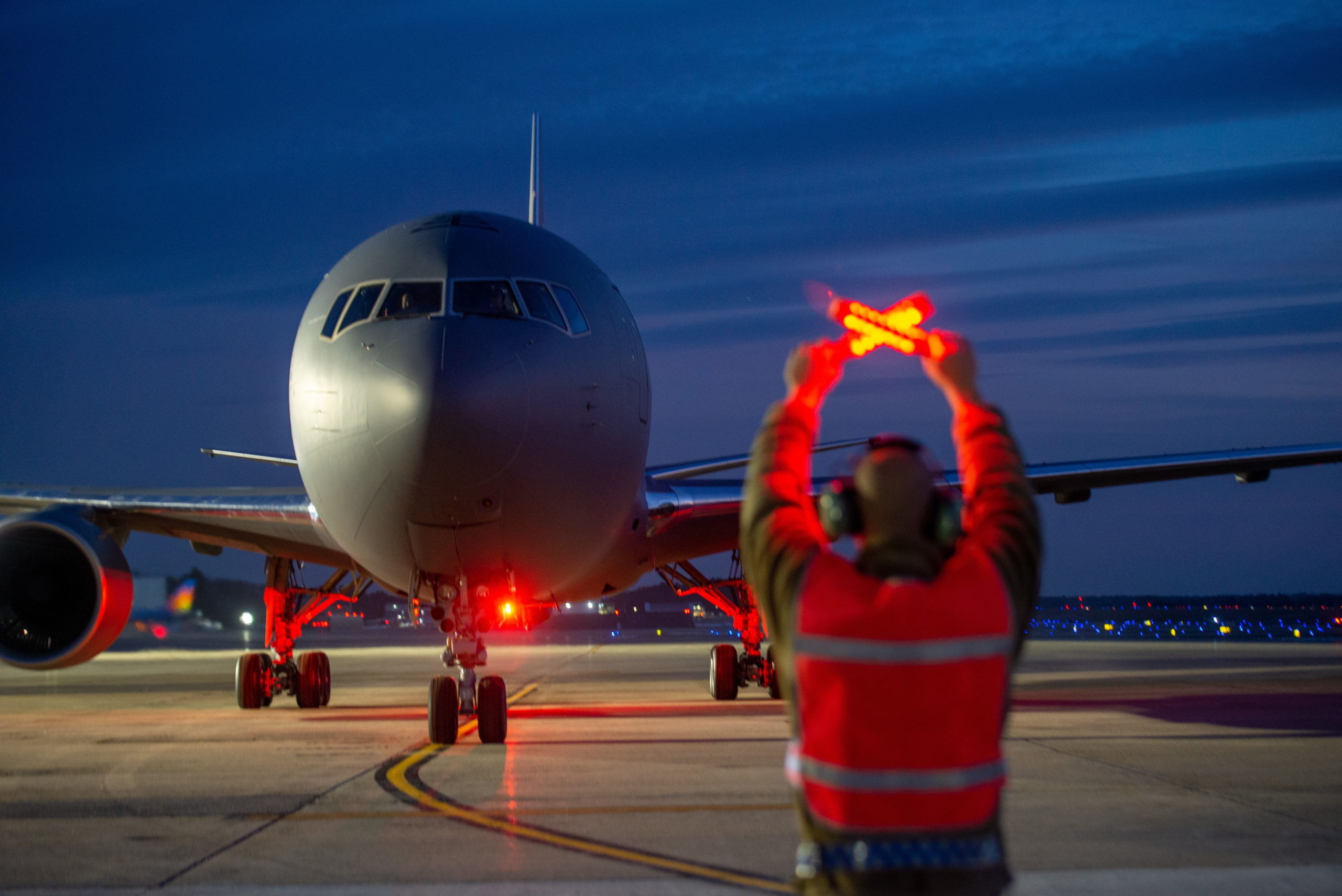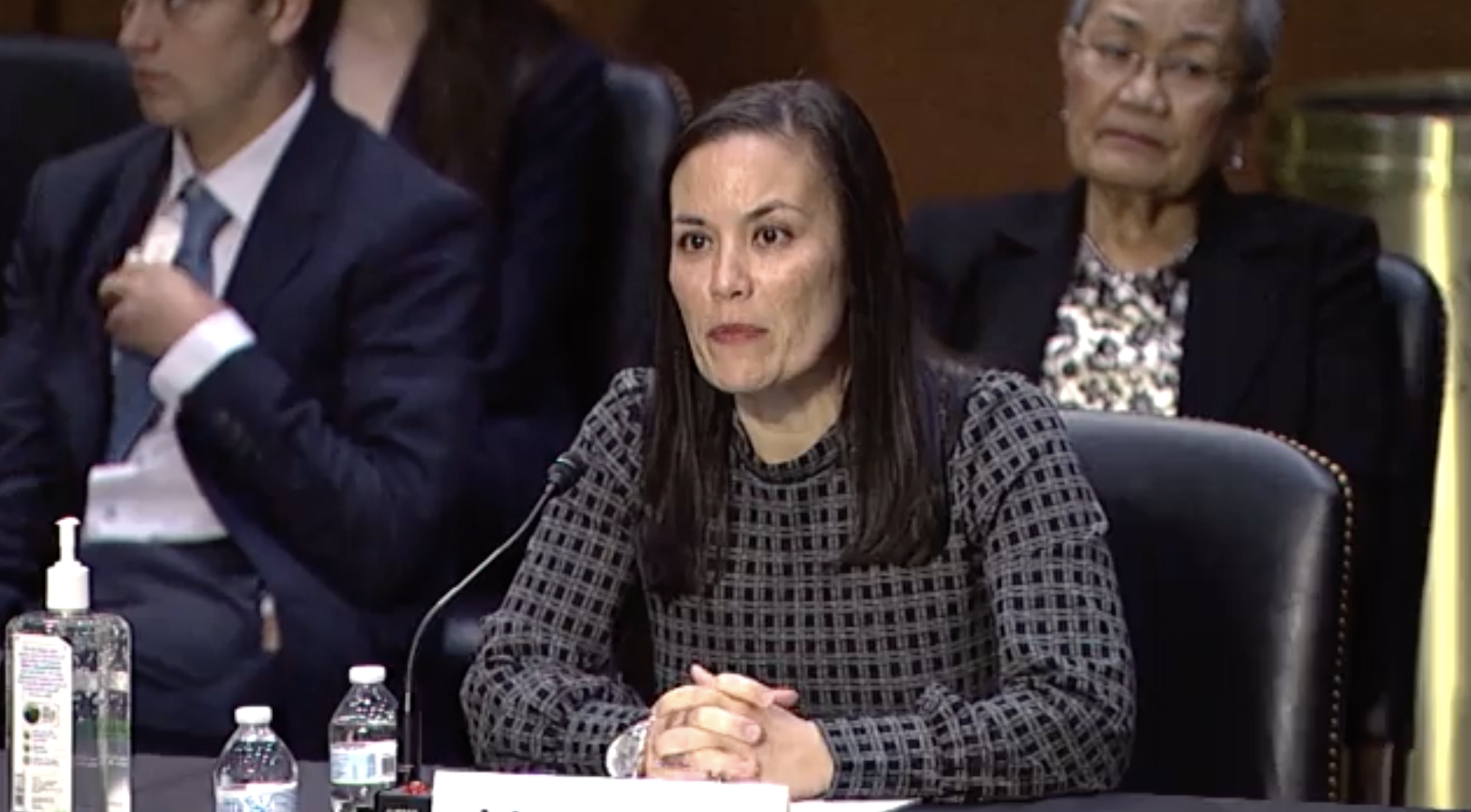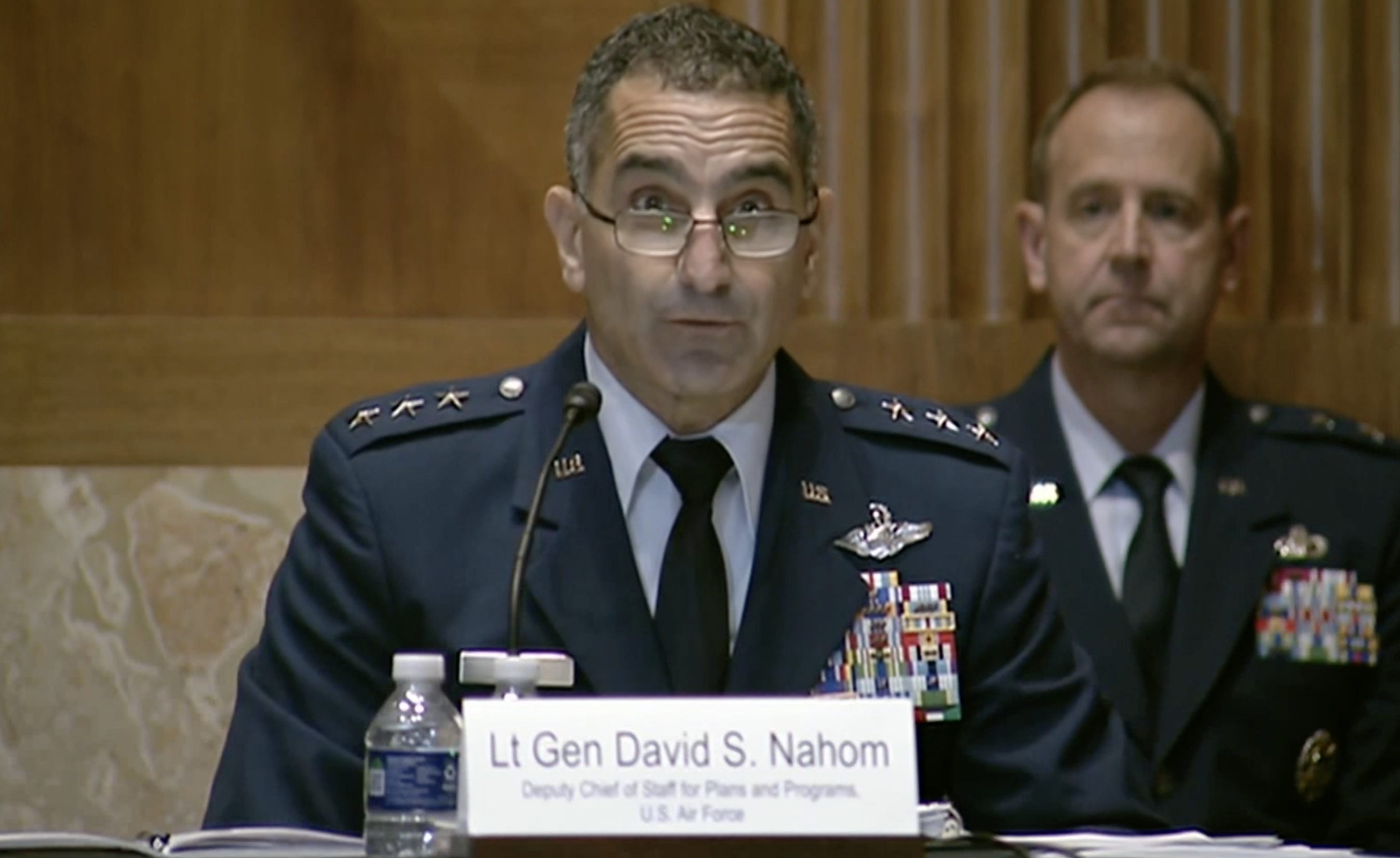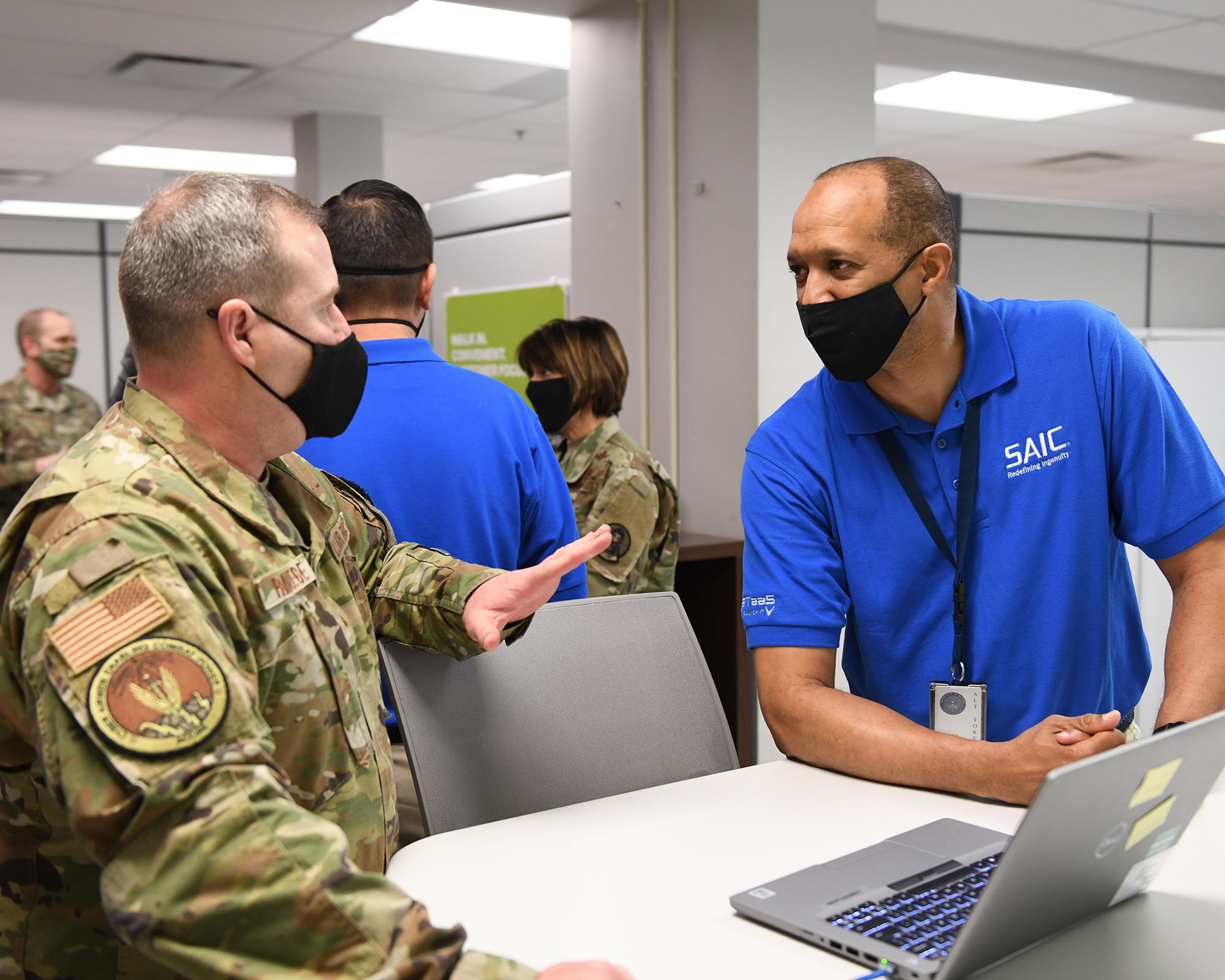High temperatures and drought across the West are sparking an almost unprecedented operations tempo for Air Force firefighting C-130s and aircrews.
C-130s from three Air National Guard wings and an Air Force Reserve wing are flying missions with the Modular Airborne Firefighting System, supporting the U.S. Forest Service. Activated a month earlier this year than in 2020, they are flying at twice the pace as last year, fighting huge blazes including the Dixie Fire in Northern California.
“You can really see the impact,” said Col. Gary Monroe, commander of 1st Air Force (Air Forces Northern)’s 153rd Modular Airborne Firefighting System Air Expeditionary Group. “The heat, the drought, and all the conditions out there are just very bad for sparking wildfires. … That’s why we’re here, to help with that, and to mitigate any damage or suffering that’s out there for our neighbors, our friends, our families, our citizens all around us.”
First Air Force is the Defense Department’s operational lead for USAF’s efforts fighting the fires, operating under activation by the U.S. Forest Service. The group is headquartered next to the USFS National Interagency Fire Center in Boise, Idaho, with MAFFS aircraft flying out of McClellan Airport in Sacramento. The units train early in the year to be ready to go once needed, with this year’s spin-up beginning in April. The Air Force knew “that the fire season could be early,” Monroe said.
For the 152nd Airlift Wing of the Nevada Air National Guard, the activation order came in late June, but what was anticipated as a month of missions has not abated.
Lt. Col. Patrick McKelvey, a C-130 pilot, flew three rotations—including a personal record of nine fire-retardant airdrops in one day—when the activation was extended another month July 20. The wing also flew out another aircraft, with the Wyoming Air National Guard’s 153rd Airlift Wing and the Reserve 302nd Airlift Wing in Colorado also contributing to the fight. The California Air National Guard’s 146th Airlift Wing has been flying support since the early days of the fire season.
“We found ourselves in the situation of kind of scrambling to put together another month worth of a second crew that we didn’t know we were going to need,” McKelvey said. “So, I just told the scheduler, throw me in where you need me. Put me in, coach.”
As of July 22, MAFFS crews have flown 252 sorties, with 247 drops totaling 697,746 gallons on 12 fires.
The typical day of operations starts about 9 a.m. with a mission briefing, with groups such as CalFire and the Forest Service outlining where help will be needed. Once launch orders come out, detailing the latitude/longitude for the area and radio frequencies, the C-130s take off and link up with “air attack”—an aircraft flying higher, coordinating other planes and firefighters below like an E-3 AWACS would in a combat zone.
Once in the fire area, the C-130 then falls in with a “lead plane,” typically a small OV-10 Bronco or a King Air 200, that leads the Hercules through the fire zone. The lead plane uses smoke to signal to the Herk where to start the drop and where to stop, and how to egress the area.
After conducting drops of the red retardant, which crews call “mud,” the C-130 then lands at a nearby tanker base to start the process again.
“We’re just going in and out of tanker bases: landing, shutting down, filling up with retardant … fire back up, take off, and go back to the fire,” McKelvey said. “Most of our days have just consisted of just doing that all day long. Just in and out, back and forth, just hauling mud to the fire.”
For McKelvey, the mission is a big change from his background. A former Navy F/A-18 pilot, McKelvey transferred to the Air National Guard to stay in Nevada while remaining in military service. Though his time in a Hercules is shorter than that of the other MAFFS pilots, the background of difficult flying, such as operating off carriers, translates.
“It’s some of the most dangerous flying I’ve done in my career,” he said. “And it’s high risk, high reward.”
While the C-130 crews try to keep the procedures of dropping the retardant similar to those of regular airdrops—following the same callouts and checklists—the environment is massively different.
Typical airdrop landing zones have been surveyed, with crews knowing the way in and out and ensuring the environmental conditions are predictable. Above burning mountaintops in high temperatures, pilots do not have the luxury of that predictability.
“For us, every situation we go into is unique,” he said. “Nobody has seen it. You’ve never flown that line. You have absolutely no idea what you’re getting into. And we’re going down to 150 feet and doing it far slower than we would normally do an airdrop because of the way the retardant comes out of the airplane. So, it’s lower, you’re heavier at max gross weight, you’re using far more power. It’s hot, you’re at high altitude up in the mountains, canyons, obstacles, trees. Next to flying around the aircraft carrier at night, this is probably some of the most high-risk flying I’ve ever done.”
Crews are wringing out every bit of performance from their lumbering C-130s. Some aircraft have advantages, including upgraded 8-blade NP2000 propellers or the Rolls-Royce T56 3.5 engine enhancement.
“We’re taking off at 155,000 pounds, which is the max gross of the airplane,” he said. “If it was cold weather, it would be great, right? Better performance. But things don’t catch fire when it’s cold. They only catch fire when it’s insanely hot, which affects our performance. So we will be max performing the airplane a lot of the time. And there’s a lot of situations where you’re asking every ounce of performance from the engines.”
The individual units deploy maintainers along with the aircrews to help keep the aircraft flying. The Nevada unit is also in a good position, with its home base only a two-hour drive away, to bring it parts or more expertise. The unit’s home base in Reno is also a divert location for MAFFS aircraft up in California if they have a problem.
The 152nd AW C-130s have flown every day extensively and have not run into a maintenance issue.
“Our airplanes have just been absolute chariots,” McKelvey said.
Weather, however, does have a say. There have been multiple times when a C-130 flew into the fire traffic area behind the lead plane but encountered unsafe conditions—such as high turbulence or hot “dead air” that impacts the aircraft’s performance—and the aircraft commander called off the flight or changed their approach.
“The ultimate decision obviously rests on the aircraft commander on the C-130 to say, ‘This looks good’ or ‘This doesn’t look good,’” he said. “There have been many situations where the aircraft commander looked at a situation and just didn’t feel comfortable and bailed out of it or took a go-around before getting into it.”
Not everyone is up to this mission. “You don’t just have to [just] meet the qualifications—you have to be good as well,” McKelvey said. “Just because you’re qualified doesn’t mean you’re going to do it … the MAFFS instructors and the cadre that are in are kind of the ones that determine whether or not somebody gets selected.”
The MAFFS crew is a small community. “We pick the best pilots, aircrews, and everything else experience-wise to get out there and fly this mission so that they can be the best they can all the time,” Monroe said.
Crews rotate in and out of duty on a weekly basis to stay fresh and avoid hitting the 10-day limit on consecutive days flying. Each unit has about 10 trained crews, and there is no shortage of volunteers.
“We love this mission—this is an outstanding mission—but if we’re called out, that means somebody is losing some property, or in danger, or something like that,” Monroe said. “We never want that, but we are there to help. And that’s why we’re ready.”
The MAFFS mission is unique in its operational requirements while also contributing to protecting the public, said McKelvey, the former Super Hornet pilot.
“In the world I grew up in in the military, I got to do a lot of the things that we trained for, as far as combat, close air support, support the troops on the ground, but I would say 99 percent of the stuff we did was training for something that you hope never happens,” he said. “Whereas this, it’s an operational mission that we get to do in our own backyard for the benefit of our neighbors, community, etc. So when you’re driving a fire line down a residential neighborhood and putting retardant down trying to save homes, and you come back the next day and you see that retardant line and everything on the one side of the line is burned and everything on the other side of the retardant line is still standing, there’s a lot more job satisfaction knowing that you were able to help save someone’s home, someone’s business.”

